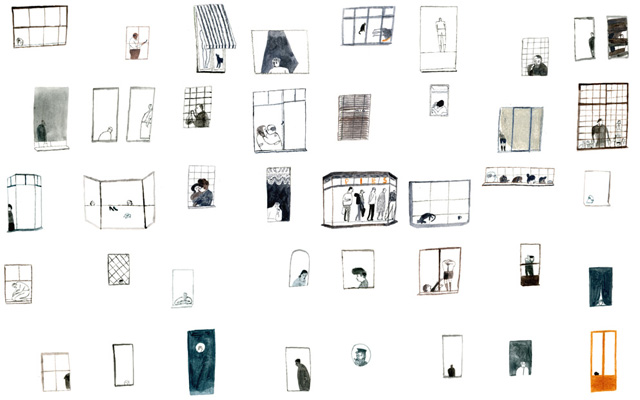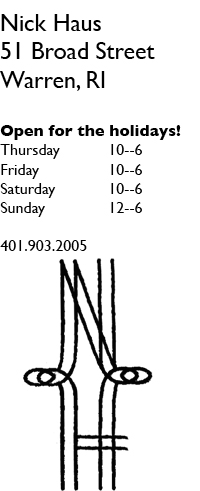What the story of my thrice-removed connection to Elizabeth Taylor lacks in good taste it makes up for in meaninglessness. I will mention one of the links in this puzzle only by sobriquet, as I haven't seen him in years and everyone else in my little anecdote is dead.
In the summer of 2004, I spent an awkward weekend at a cold and very beautiful house in Connecticut with two friends from RISD. Our host was an aging psychotherapist to the stars with a taste for Winslow Homer, Wiener Werkstätte ceramics and young (male) artists; luckily for him, he could afford all three. The weekend most assuredly didn't go as he'd planned, but "the Good Doctor" was gracious and, as it turned out, more than happy to talk about the splendor that surrounded him. Mostly I think he was lonely.
It rained all day, keeping us from exploring the grounds, but in the library I found a row of red bound leather volumes, with
SHOW written in gold on the spine of each, all from the early 60s. I read them for hours, fascinated by the glittering names dropped on every page. Glossy photos covered whole pages and the articles moved briskly through the arts and culture scene of the period. How had I missed any reference to
SHOW? It looked like something that could have been seminal.
The Good Doctor explained that the books were the sole archive of the magazine, and had belonged to his best friend and founder of
SHOW, Huntington Hartford. It was a familiar name; I recognized it from a row of sainted industrialists that stands outside of the Merchandise Mart in Chicago:

Long story short, the Good Doctor was talking about this
Huntington Hartford,

who managed to run through one of the largest fortunes ever amassed (in 1950 alone, his interests netted 2.7 billion dollars), mostly by funding glossy money pits like
SHOW.
Later that night, I slept in a bedroom with a portrait of Hartford's favorite yacht, and there were similar tokens sprinkled throughout the house. I'm not sure how the Good Doctor ended up with all this Hartford ephemera, except that they were close friends. At the time, Hartford was still alive.
In the morning the Good Doctor was feeling nostalgic, and told a story about a breakfast 40 years earlier, spent sunning on Huntington Hartford's terrace, overlooking Central Park and smoking an enormous blunt with Elizabeth Taylor.

So while people wax poetic about her eyes, her sparkle, her performances both good and bad, all I can think of is a meaningless morning 40 years ago, when to lay beside her in the sun must have felt like all the luck in the world had fallen at your feet.















































